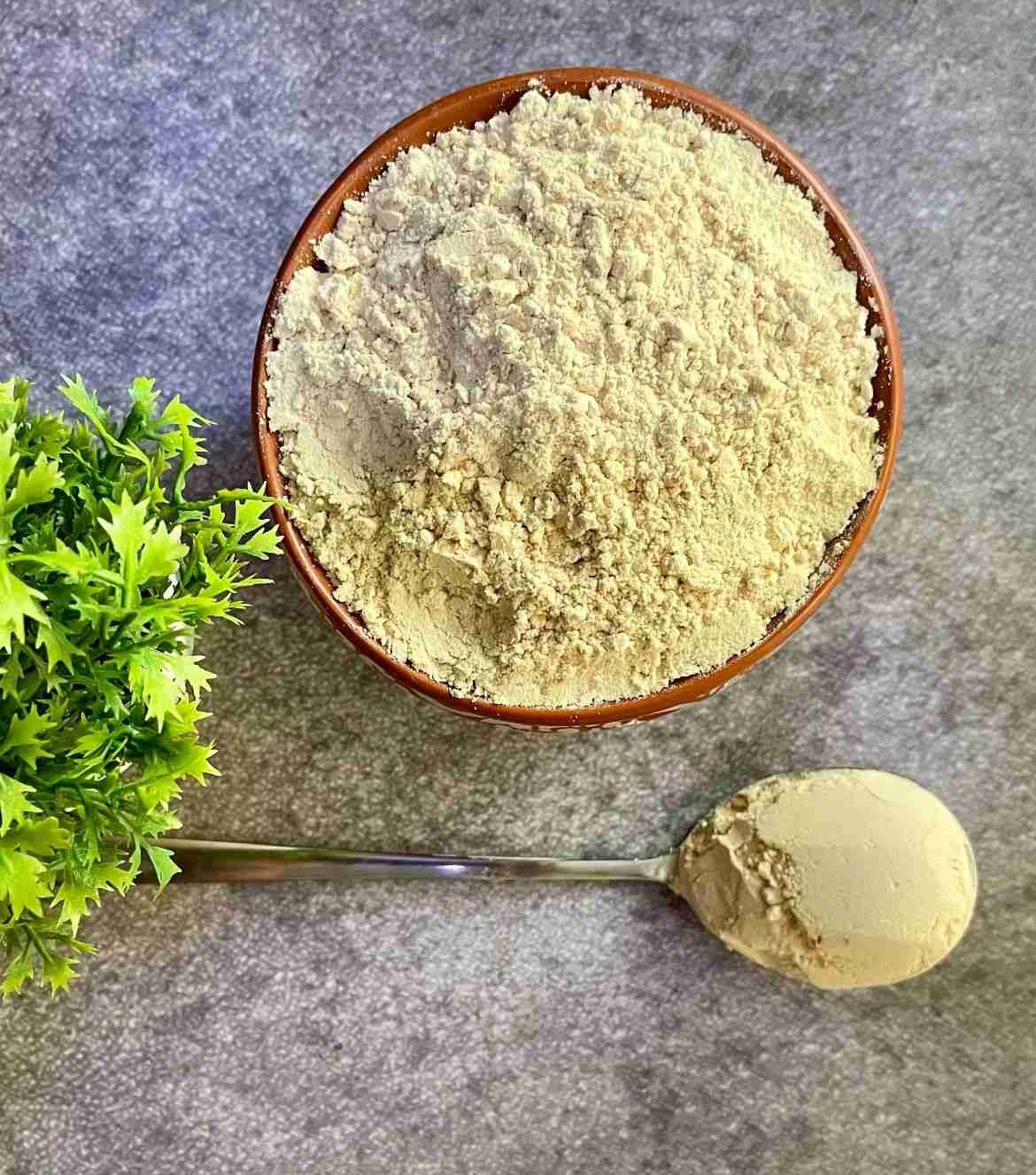
This super food has existed in our country for decades. Sattu atta or Sattu maavu is familiarly mentioned as a quick breakfast option in many households across India. A staple in Bihar, Jharkhand, West Bengal, Uttar Pradesh, Rajasthan, and Madhya Pradesh, it is cherished and consumed by laborers and farmers.
Sattu, derived from roasted Bengal gram flour, is often hailed as the “poor man’s protein” for its affordability and rich nutritional profile which is now also gaining popularity in urban areas. What earlier belonged to a few states, is now a famous and exotic food ingredient that is easily available even in supermarkets.
Growing up, sattu was not just a food item for me; it was a cornerstone of my childhood memories and experiences. In the bustling kitchen of my Bihari household, sattu was omnipresent, woven into the fabric of our daily lives in countless ways. From savory dishes to refreshing drinks, sattu featured prominently on our dining table, each serving a testament to its versatility and significance.
Interesting History of Sattu
There have been many stories behind origin of sattu. However the most common one is that, Sattu originated in Tibet where it is known as ‘Tsampa’. It was a staple travel food of monks, who traveled long distances in search of enlightenment. It was durable, easy to eat and provided them with required nutrients and energy.
Infact, in the heroic case of the 1999 Kargil War in the Batalik Sector, not many know that the win initially was achieved, courtesy Ladakh Scouts. This unit was instrumental in ensuring that not only the little battalion posted up there got their ammunition and information supply, but food as well— especially Sattu.
Health benefits of Sattu:
- Rich source of protein: Did you know 100 grams of sattu can give you 20 grams of pure protein? Sattu is made from roasted Bengal gram flour, making it a potent source of plant-based protein.
- High fiber content: Sattu contains dietary fiber, which aids digestion, promotes bowel regularity, and helps maintain a healthy gut.
- Low glycemic index: Sattu has a low glycemic index, meaning it causes a slower and steadier rise in blood sugar levels, making it suitable for individuals with diabetes.
- Nutrient-dense: Sattu is packed with essential vitamins and minerals such as iron, calcium, magnesium, and potassium, which are vital for overall health and well-being.
- Energy booster: Sattu provides a sustained release of energy due to its complex carbohydrates, making it an ideal pre- or post-workout snack.
- Cooling properties: Sattu has natural cooling properties, making it a popular choice during hot summer months to beat the heat and stay hydrated.
- Weight management: Sattu is low in calories and fat, making it a nutritious option for those looking to manage their weight while still feeling satisfied and full.
- Supports heart health: The fiber, protein, and potassium content in sattu may help lower cholesterol levels, reduce blood pressure, and support cardiovascular health.
- Boosts immunity: Sattu contains antioxidants and micronutrients that help strengthen the immune system and protect the body against infections and diseases.
- Promotes bone health: Sattu is a good source of calcium and magnesium, which are essential for maintaining strong bones and teeth, reducing the risk of osteoporosis.
How to select Sattu Flour?
When an ingredient becomes more popular, brand race starts to put their stamp on the product which is in demand. In this race, selecting a good brand becomes challenging. Go for indigenous variety of channa that is stone ground to a fine powder. Indigenous pure variety is easy to digest while being a source of insoluble fibre. Traditional stone grinding process preserves the natural taste, aroma, and nutritional benefits of the chana, making it a more authentic and a wholesome choice. You can explore Masala Monk’s Sattu Mix which is made from pure channa and is stone ground sattu flour.
Ways to incorporate Sattu in your lifestyle
- Simple Sattu Drink: This one is effective, easy and you just need a few ingredients to make this recipe. It is an easy fussy free recipe which will keep you hydrated in summer heat. All you need to do is mix sattu, lemon juice and some spices in a glass of water. Stir it well and drink this nutritious drink. For the full recipe, click here
- Sattu Parantha: A staple in Bihar, sattu parantha is delicious and so easy to make, and you can pair it with curd and pickle. Just make simple filling with sattu, onion, green chillies and spices. Then add the filling in the middle of your parantha dough and cook. Check out the full recipe here.
- Buttermilk Sattu: Sattu is a rich source of protein and when mixed with buttermilk it is a natural and a potent protein shake. This drink is a quick escape from the sweltering summer heat and a refreshing twist on a classic drink that’s both easy to make and high in protein. Click here for full recipe.
- Sattu Cheela (Pancake): A good and nutritious breakfast recipe, sattu cheela is easy to make. For this, you need is a mix of besan, sattu, spices and vegetables of your choice. It is simple protein rich breakfast recipe. Know how you can make this iron rich too. Check the recipe here.
- Sattu Porridge: Sattu Porridge is a wholesome and nutritious breakfast option that combines sattu with creamy milk and a touch of natural sweetness. This hearty porridge provides sustained energy and keeps you feeling full and satisfied throughout the morning. With its easy preparation and customizable toppings, it’s the perfect way to start your day on a healthy and delicious note! Click here for detailed recipe.
- Sattu Chokha: It is a humble yet flavorsome dish. With no cooking involved and no intricate techniques required, it’s a true testament to the beauty of minimalism in cooking. Made primarily from sattu, this dish celebrates the natural flavors and nutritional benefits of its core ingredient. Mixed with an array of aromatic spices and fresh ingredients like onions, green chilies, and coriander leaves, Sattu Chokha is a delightful medley of textures and tastes. Click here for full recipe.













